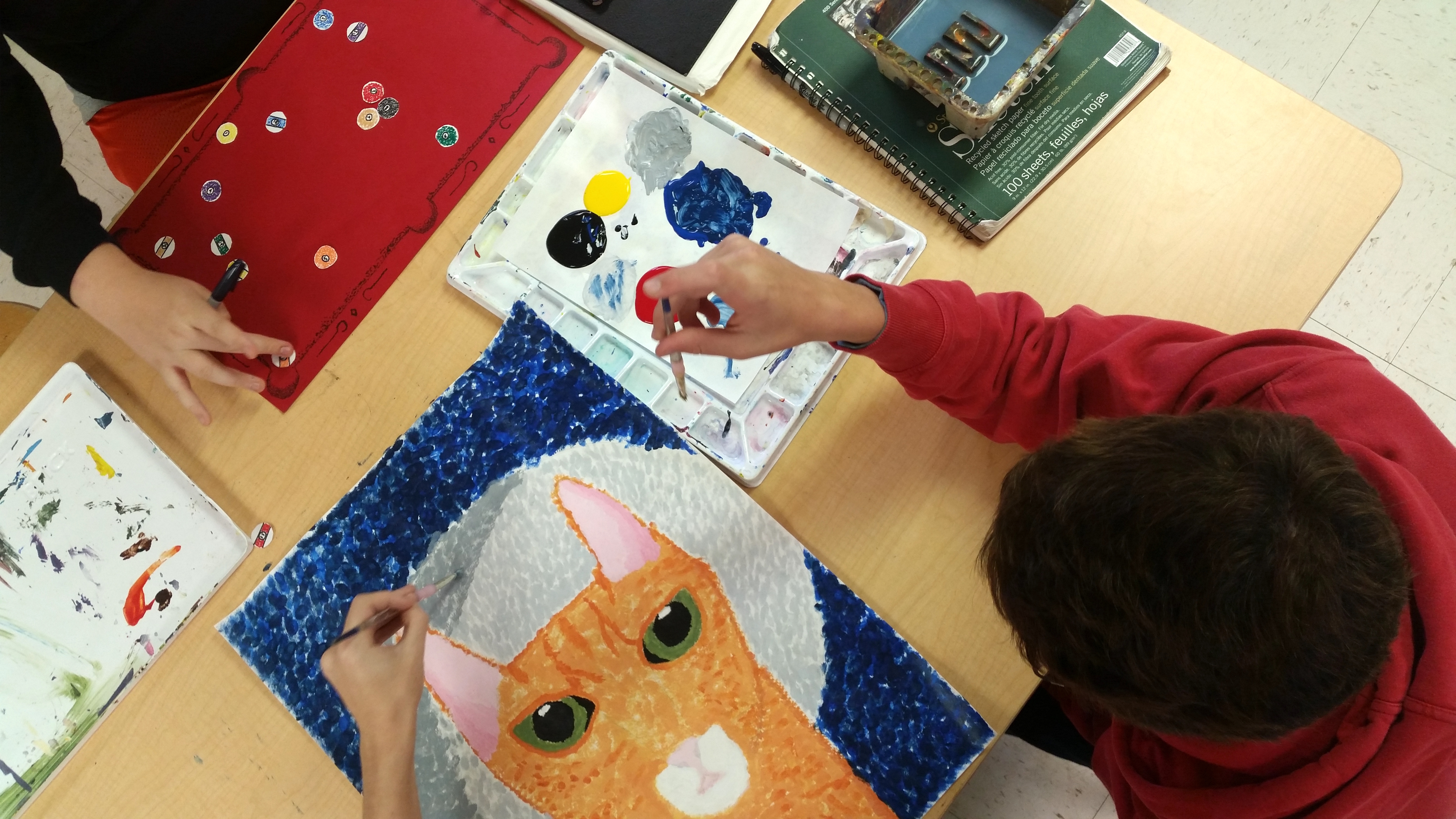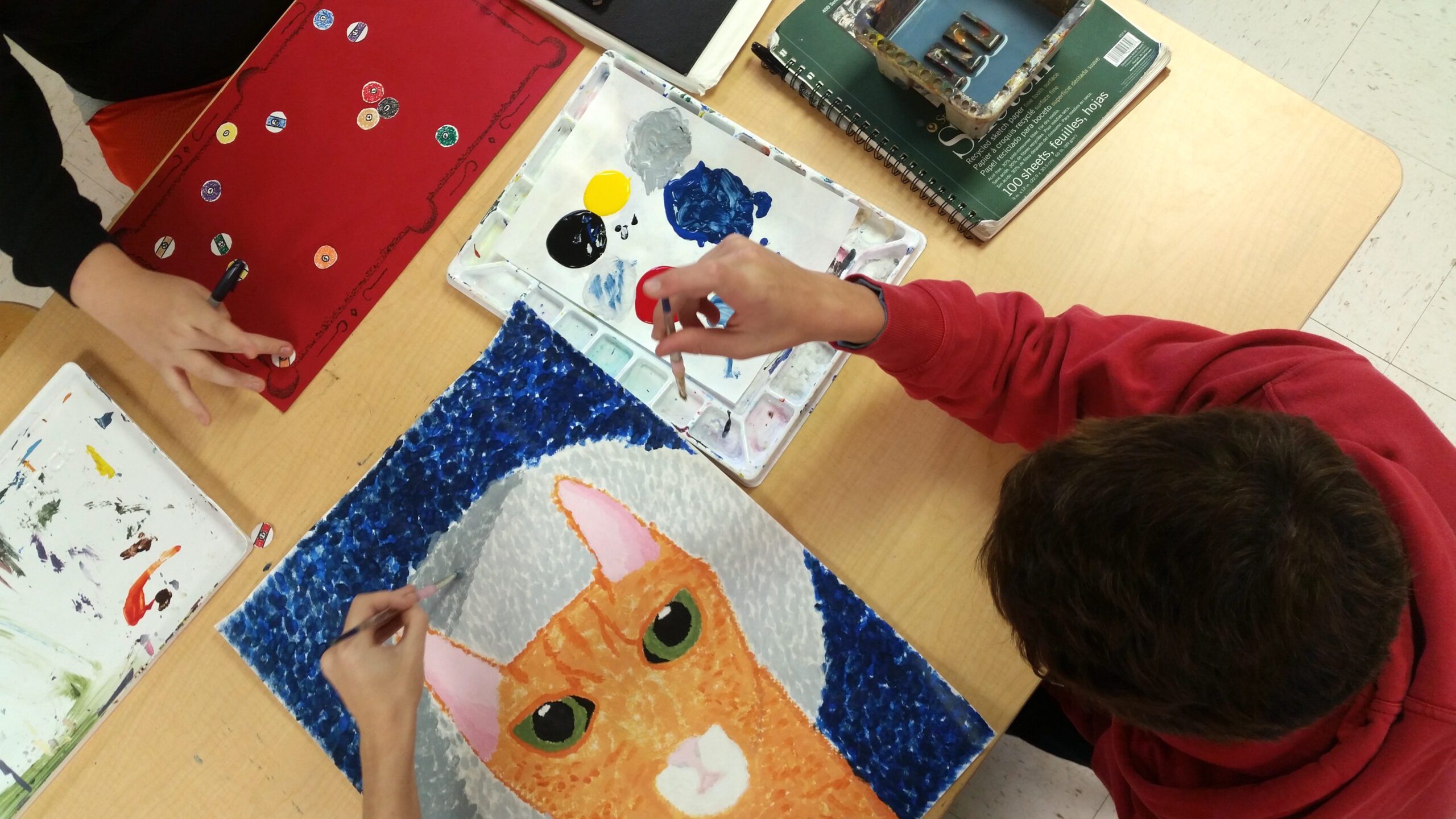Guiding students to become independent learners is a goal of teachers everywhere. A proven method for teaching for eventual student autonomy is the Gradual Release of Responsibility Model. This instructional strategy is frequently used in language arts classrooms, but it’s also applicable to the art room. Instruction is scaffolded by gradually giving students more responsibility for learning. This can happen over one lesson or over a few weeks of instruction.
Parts of the Gradual Release Model are very familiar to art teachers, while other parts might be less so.
The model is sequenced into the following four steps:
1. I Do – the teacher leads instruction
2. We Do – the teacher leads guided practice
3. You Do Together – students practice collaboratively
4. You Do – students practice independently
Here is how to use the four stages in your classroom.
1. I Do
Start teaching the skills you want students to learn by demonstrating in what’s called a “focus lesson.” This part of the lesson should be short, so think carefully about the key information your kids need to be successful, and plan to include instructional supports like anchor charts. As you demonstrate, model your thinking by talking out loud.
“As I draw the horse’s mane, I’m comparing the negative space in the image to what I see on my paper.”
“I start my value scale with the darker value where I use the most pressure to draw. I use a little less pressure each time the value gets lighter.”
Narrating your thought process like this can be hard at first. Much art making is intuitive for us because we’ve done things thousands of times. However, it is immensely helpful for students to see how and what we are thinking as we create.
2. We Do

After new information is introduced in the focus lesson, it’s time for students to try out what they’ve learned. At this point, most kids still need a high level of support, and your role is to guide students through figuring out new skills with hands-on practice. This step could look like students making their own version of your example or experimenting with specific techniques. It’s important to note that this stage is not the time to start final artwork. Instead, it’s a time to develop understanding through practice. As students work, assess how they are progressing by observing and questioning. What you see and hear will guide you as you work with students to develop new skills.
3. You Do Together

This stage is the place for building deep understanding. During this stage, students work collaboratively in groups to develop the skills you’ve taught. They should be working without direct instruction. However, if it’s clear students need re-teaching, then feel free to model things again.
The groups should be working to apply concepts together. For example, they could be working in groups to mix challenging paint colors, identifying attributes in artwork as a team, or working through ideas for a thematic assignment. The key idea here is harnessing the power of collaborative thinking to give students independence and the support of their peers at the same time.
4. You Do

After working through the first three stages, your students should be ready to go solo and apply their new knowledge. At this stage, you want your students to be truly autonomous. Keeping that idea in mind, your students should not be replicating a teacher example at this point. They should be making art where they independently are deciding how to use what they have learned.
Douglas Fisher, Gradual Release guru and author, writes about this stage, “As the goal of all of our instruction, independent learning provides students practice with applying information in new ways. In doing so, students synthesize information, transform ideas, and solidify their understanding.” In other words, this stage is where connections are made and where the content really sinks in.
Our goal as teachers should be to get students to work independently with success. Too often we limit this opportunity by stopping instruction at the “We Do” stage. Stopping with teacher-directed lessons might create visually appealing artwork, but it also creates students who expect to be told what to do. Instead, as part of every learning experience, students should be required to think for themselves by applying their learning independently in the “You Do” stage.
Do you use this teaching method?
How else do you foster independence in your classroom?
Magazine articles and podcasts are opinions of professional education contributors and do not necessarily represent the position of the Art of Education University (AOEU) or its academic offerings. Contributors use terms in the way they are most often talked about in the scope of their educational experiences.





